Russian Navy. Sad look into the future. Coastal troops
Briefly, the list of the main tasks of these troops can be described as:
1. Protection of naval bases and other important objects, forces fleet, troops, as well as the civilian population from the influence of the naval forces of the enemy, primarily through the destruction of its surface ships and amphibious assault forces, as well as anti-air defense.
2. The defense of key coastal sites from attacks from the land.
3. Landing and actions in the sea, airborne assault forces.
4. Anti-sabotage fight.
BV Navy include:
1. Coastal Missile-Artillery Troops (BRAV).
2. Marines.
Let's start with BRAV. In the years of the USSR, it was based on missile and rocket-artillery brigades, and separate divisions and regiments, which were armed with both missile and artillery systems.
The first missile system, which entered service with the domestic BRAV was the Sopka 4K87.
For its time (and the complex was put into service on December 19 1958 g), it was a rather formidable weaponbut nevertheless, as a coastal missile system, it had significant drawbacks, the main of which should be recognized as a semi-active guidance system. Theoretically, the missile range of this complex reached 95 km, but, of course, only under the condition that the radar target illumination can provide guidance at such a distance. The launch mass of the rocket was 3 kg, the weight of the warhead was 419 kg, the speed was 860 M, the marching flight height was 0,9 m. launch from missile carriers and there was an attempt to turn it into a universal, that is, used and aviation, and ships, and coastal parts. The beginning, without a doubt, is good, but then it failed. Nevertheless, despite significant shortcomings, the “Sopka” was in service with the BRAV until the early 80s.
Of course, the leadership of the USSR was quite clear that much more advanced weapons were needed for the coastal forces, and they received them. In 1966, the BRAV USSR adopted the coastal missile system (DBK) 4K44B Redut.
It can be said that it was then that for the first (and, alas, for the last) times, the Brav of the USSR received modern weapons, and fully responded to the tasks of the BRK. For the end of the 60s, this was the real pinnacle of this technique.
The Redut DBK was built on the basis of the P-35 anti-ship missile, which armed the first Soviet missile cruisers of the 58 (Grozny) type and 1134 (Admiral Zozulya) projects. The length of its land modification P-35B reached 9,5 m, the starting weight was 4 400 kg, the cruising speed was 1,5М, that is, it was supersonic. The firing range of the BRK, according to various data, was 270-300 km, the mass of the warhead, again, according to various data 800-1000 kg or 350-kiloton "special ammunition".
The missile seeker worked very interestingly. On the marching site, an inertial guidance system was used, and after the missile entered the target area, a radar sight was turned on. The latter transmitted the radar "picture" to the missile operator, and he assigned each missile its target for attack, after which the anti-ship missile attacked the ship assigned to it using the radar seeker. Another interesting feature of the complex was the ability to use the P-35B not only in the shock, but also in the reconnaissance version - the author of this article does not have a detailed description, but it can be assumed that such a missile was, in fact, a disposable UAV, which, due to the removal the warhead significantly increased the flight range. As far as can be understood, there were three flight profiles of the rocket, however, the indications of the range on them differ. Probably, the numbers were close to the following - 55 km at an altitude of 400 m, 200 km at an altitude of 4 m, and 000 km at an altitude of 300 m. In the reconnaissance version, the missile's range was increased to 7 km. At the same time, in the last segment of the trajectory, the rocket descended to a height of 000 m and attacked from it.
Subsequently, at the end of the 70-ies, the BRK received the upgraded 3М44 Progress rocket, in which the range (in the shock version) reached 460 km, while the GOS of the rocket became more interference-proof. Also, the height in the final section has been reduced from 100 m to 25 m, while this section itself has been increased from 20 to 50 km.
The mass of the self-propelled launcher (SPU-35B) reached 21 tons, with only one missile placed on the vehicle. In addition to launchers and machines with a control system (“The Rock”), the complex also had a mobile radar, but, of course, the main target for targeting the Redut missile systems was external target designation, which the complex could receive from specialized aircraft and reconnaissance helicopters 95D, Tu-16D and Ka-25Ts.
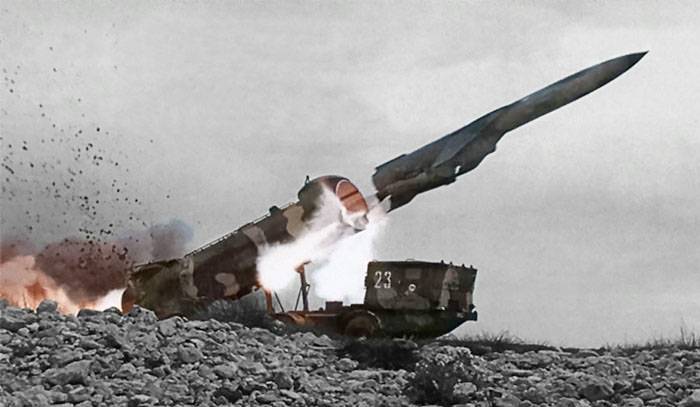
Today, the complex is certainly outdated, but still represents a certain threat and utility (at least due to the diversion of air defense when used in conjunction with more modern anti-ship missiles) and is still in service with the Coastal Forces of the Russian Navy. The exact number of surviving launchers is unknown, perhaps - 18 units. (regular strength of one battalion, 18 missiles in salvo).
As we have said above, for its time, the Redut BRN 4K44B was a very sophisticated complex, basically responding to the tasks faced by the Brav of the USSR, this cannot be said about the following (and, alas, the last) Soviet BRK. BRK 4K51 "Frontier"
was created to replace the "Sopka", and was considered not operational-tactical (as "Redut") but a tactical complex. In addition, it was supposed (and actually carried out) the export deliveries of this complex to the Allied countries in the Department of Internal Affairs - the export of "Rubezh" was prohibited.
In essence, 2 can distinguish the key shortcomings of the Frontier. The first is that it was built on the basis of the deliberately outdated Termit missile P-15, which was put into service in 1960, which is still nonsense for the complex, which they began to develop ten years later. Of course, the rocket was upgraded - the Rubezh received the P-15М, on which stood the upgraded GOS (active radar DS-M instead of DS or thermal Snegir-M instead of Condor), the maximum range increased from 40 to 80 km, flight altitude, on the contrary, decreased from 100-200 to 25-50 m (although, apparently, it strongly depended on the firing range), the mass of the warhead increased from 480 to 513 kg, while P-15M could carry tactical nuclear warhead power 15 kilotons.
Nevertheless, it was a large (2 523 kg) subsonic (0,9М) rocket with a homing system, which can hardly be called adequate for 70's, and after all, Rubezh BRK was adopted by 22 in October 1978, that is, on the eve of 80's. According to the author of this article, the creation of such a complex could only be justified by the principle “On you, God, that we are not fit” - that is, the implementation of a purely export weapon system, in which combat effectiveness was sacrificed for the cost and simplicity of service, but Rubezh "Entered into service with the USSR BRAV and is in service at the present time.
The second disadvantage of the complex was the concept of a “land missile boat” - taking advantage of the fact that the weight of the P-15M anti-ship missiles was almost half that of the P-35B, and that this complex, by and large, was intended to attack targets within the radio horizon, it was decided to install on car chassis not only 2 launchers, but also a fire control radar. This was possible to do, but the mass of the 3S51M self-propelled launcher was 41 tons, with all the ensuing consequences for the mobility and patency of the DBK. In fairness, however, we note that tank “Tiger” from “Rubezh” didn’t work out - according to those who served on it, the launcher could still move not only along asphalt roads, but also along dirt roads, and even in the forest (although there were already significant restrictions).
But, in any case, Rubezh BRK cannot be attributed to the successes of Russian rocket production. Nevertheless, it is still in service with the Bravo Navy. Precise data on the number is not, presumably - 16-24 launchers for 2 missiles on each, more or less evenly distributed between the four fleets.
Attention is drawn to the fact that the BRAV equipment with modern missiles seems to be in the 70-80 years. was not a priority of the leadership of the USSR Armed Forces. So, for example, in 1975, the Basalt P-500 RCC was adopted; its capabilities were significantly superior to both the P-35B and the future Progress 3М44, but it was not much in terms of the Brav armor, though PKR BRK "Redut". The same applies to the very high-quality for its time PKR "Mosquito".
On the other hand, according to some sources, in the USSR, the “long arm” was designed specifically for the BRAV - the anti-ship missile with a range of up to 1 500 km. But it is obvious that its design was curtailed after the signing of the INF Treaty in 1987, when the United States and the USSR assumed obligations to completely abandon land-based ballistic and cruise missiles in nuclear and non-nuclear design. In the future, work on the creation of new complexes did not involve the use of anti-ship missiles with a range of 500 km or more. And the following DBKs entered BV Navy already in the Russian Federation.
The first was adopted by the BRK "Ball"
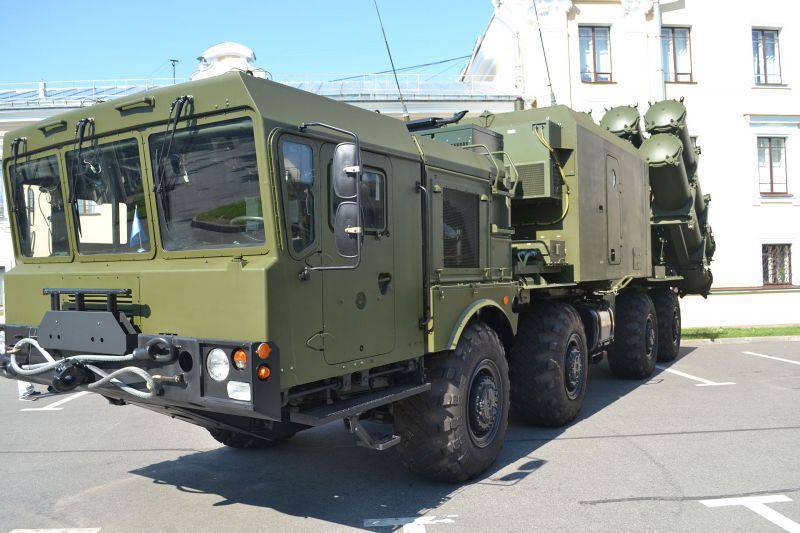
This event was joyful for the Coastal Forces in 2008. The complex is built “around” the X-35 anti-ship missile, and its more long-range variant X-35U. Apparently, “Ball” is not a Soviet reserve, but was already developed in the Russian Federation.
This was the case - work on the X-35 began in the 80s of the last century, and although the rocket itself was created in 1987 g, the identified problems with its GOS were eliminated only by 1992. But in the “wild 90-e” works X-35 stopped and were reanimated thanks to the X-35E export offer that interested the Indians (during the period 2000-2007 r, 222 of such missiles was supplied to them). It was only after this that the development of the onshore complex for this rocket began, and, as we have said earlier, the Ball DBK in 2008 g was adopted.
This BRK can be described in two words: "cheap" and "angry". The mass of the “coastal” X-35 reaches 670 kg, which is several times less than what was previously received by domestic RIS. Flight range - 120 km from X-35 and 260 km from X-35. The mass of the warhead - 145 kg. The missile’s homing is carried out with the help of an inertial guidance system (plus satellite correction) on the cruise and an active-passive radar homing (i.e., capable of being guided both by the on-board radar and by the radar source). The range of target acquisition from the original version of the GSN Gran-K was 20 km, while the more modern version had 50 km. The advantages of the rocket also include the low ESR (unfortunately, the data were not disclosed), as well as the low-altitude flight profile: 10-15 m on the cruise, and 3-4 m on the attack site.
The disadvantage of X-35 is usually considered to be the subsonic speed of its flight (0,8-0,85М), but in fairness we note that “according to Senka and the cap” - there is no point in putting expensive and heavy supersonic anti-ship missiles on small, or relatively weak, surface enemy warships. As for large and well-protected, for example, such as American destroyers of the Arly Burk type, here too the massive attack of subsonic anti-ship missiles has very good chances of success. Despite the seemingly slow speed that emerged from the radio horizon (that is, 25-30 km from the destroyer), the X-35 rocket will hit the target in just 1,5-2 minutes - and this is very little even by the standards of modern combat information systems . Of course, one or several of the Aegis missiles are quite capable of intercepting, but two or three dozen ...
The Ball division of the BRK division includes up to 4 mobile launchers, with 8 containers for missiles installed on each, which allows 32 rocket salvo to be launched within 21 seconds or less (the interval between missile launches is up to 3 seconds). Some surprise, however, is caused by photos of four-rocket installations.
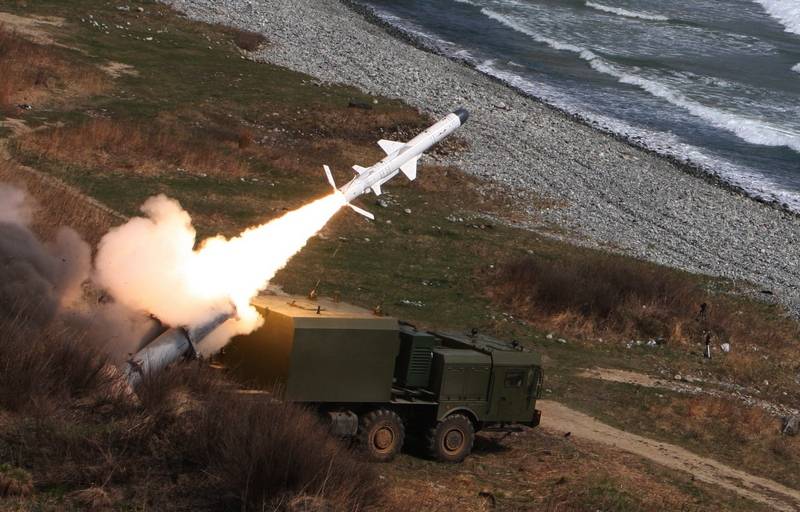
But here is one of two things - or our Defense Ministry of the Russian Federation saved on the armed forces for the umpteenth time, or (which, according to the author is closer to the truth), the launcher is modular, consisting of two 4 missile blocks each, and it’s understandable that in daily operation (including exercises with the actual use of weapons) one unit is enough.
In addition to the launchers, the division's regular staff also includes up to two control machines, and up to 4 transport and handling machines (obviously, their number corresponds to the number of launchers), which allows, if necessary, to form a second volley.
On the whole, it can be stated that the Ball DBK is a very successful tactical missile system (and operational-tactical missile complex with the X-35U anti-missile missile), which, of course, does not solve all the tasks facing the Russian BRAV, but successfully complements capabilities of their more powerful and long-range "brothers" in the near sea zone.
Unfortunately, the author of this article does not know the exact number of Ball ballistic missile systems currently in service with the Russian BRAV, but a few years ago they were equipped with at least 4 units in the Pacific, Black Sea and Baltic fleets, as well as the Caspian flotilla, which suggests that no later than 2015 g in the composition of the Russian Navy there were at least 4 of such a division (that is, 16 PU for 8 missiles). There is also information (possibly - inflated, the source is “The Military Balance 2017”), then as of last year the number of mobile launchers reached 44 units.
The next DBK - “Bastion”, apparently, began to be developed in the USSR, but entered service later “Bala” - in 2010.
Its creation began at the end of 70, the beginning of 80, because, judging by some data, the P-800 “Onyx” missile (export name - “Yakhont”) was originally intended, among other things, for the use of Brav of the USSR. to replace the gradually aging “Redut”.
In general, the P-800 rocket is a much more formidable weapon than the X-35 or X-35U. The mass of the warhead reaches 200 kg, while the rocket is supersonic — it can overcome the same 120 km by following the low-altitude flight profile, that is, at an altitude of 10-15 m, while developing a speed twice the speed of sound. But, unlike X-35, P-800, a combined trajectory is available when a rocket travels a significant part of the way at high altitude (up to 14 000 m) and only after capturing the active radar homing target will correct the flight direction and go to low altitudes. “Onyx” seeker is considered to be noise-free, that is, it is designed to operate under conditions of active and passive interference, while, according to the developers, the target acquisition range is at least 50 km. This is a very important caveat - usually for promotional purposes, the longest range of capture of the GOS is indicated, which, of course, is achieved under ideal weather conditions and in the absence of electronic countermeasures. Apparently, the concern "Granit-electron", which is the creator and manufacturer of the specified GOS, indicates a much more realistic value. And then - what does 50 km mean without specifying an EPR target? According to some data, a target the size of a missile cruiser is “caught” by the “Granit-electron” brainchild at a distance of 80 km ... By the way, the GOS is active-passive, that is, it is completely capable of being directed at the radiating object. Apparently, including at the jamming director, at least in aviation, this issue was resolved quite a long time ago, and in fact, on air-to-air missiles, the dimensions of the GOS are much more modest.
"On the Internet" there is a perception that, thanks to its high-altitude trajectory section, the Onyx anti-ship missiles are an easy target for newer air defense systems, such as the US SM-800 SAM. In fact, this is a rather controversial statement, since, unfortunately, we do not know many of the parameters of the American Aegis system, and the Onyx EPR when flying at high altitude. In other words, at the “everyday” level, it is impossible even to determine at what distance the radar station of the same “Arly Burke” will be able to detect the attacking “Onyxes”. Nevertheless, assessing the current level of technology in general, it can be assumed that such concerns have certain grounds. The fact is that the Americans initially “sharpened” their naval air defense just to repel altitude threats, such as the regiments of Tu-6, Tu-16 and Tu-22М22 with their anti-ship missiles X-3 inclusive, and it would be strange to expect that they have not achieved any success here. Nevertheless, a massive attack of rockets flying at a speed of 22 meters per second, even at a high altitude, is quite capable of “breaking through” almost any defense, the only question is the density of the volley, that is, the number of simultaneously launched rockets.
Separately, I would like to say about the firing range of the "Bastion" BRK. As is known, the export modification of the Onyx - Yakhont missiles has a “conventional” range of fire in 300 km, but what range the Onyxes themselves have is unfortunately unknown. Some analysts suggest that such can reach 800 km, however, according to the author of this article, the range of P-800 missiles, at least - in their “land” version does not exceed 500 km, since it is extremely doubtful, or rather, almost unbelievable so that Russia, on its own initiative, violates the highly advantageous treaty on the INF and will start the deployment of land-based cruise missiles with a range of over 500 km.
Apparently, the composition of the BRC Bastion division has a structure similar to that of the Ball - 4 mobile launchers for 2 missiles on each, one or two control machines and 4 transport and handling machines. Strictly speaking, the correct name of the BRK is “Bastion-P”, since there is also its immobile, mine “variation” - “Bastion-C”.
Unfortunately, it is also not possible to establish the exact number of "Bastions" in service with the Russian Navy. Greater confusion is brought about by the use of “non-standard” terminology by officials. For example, at the end of 2015, “Intefax” cited the words of the Minister of Defense S. Shoigu that: “By the end of the year, two Bastion complexes will arrive in the Northern and Pacific fleets”, while he specified that in 2016 The Navy will receive five such complexes, and “in the future, the fleets will receive four complexes annually,” and “As a result, before the 2021, we will be able to completely re-equip the coastal missile units with modern weapons” However, what is meant by “complex” in this case?
If by "complex" we mean a division of the composition described earlier (that is, 4 mobile launchers with support equipment) and taking into account the fact that at the time of the announcement of S. Shoigu from one to three battalions of "Bastions" was already in service with the Black Sea Fleet, then 2020 g inclusively the fleet should have received neither more nor less, as well as the 23 division, apart from the 1-3 available. This is too good to be true - even in the USSR, the BRAV had 4-5 divisions per fleet, both tactical and tactical missiles. And here - so many "Bastions" alone! However, if we are not talking about divisions, but about the number of mobile units, then counting 4 launchers per division, we get almost 6 divisions up to 2020 g - taking into account the need to re-equip at least four BRAV brigades (one for each fleet), each which has in its composition 3 division, it turns out somehow regrettably small, and does not correspond to the terms of rearmament declared by S. Shoigu.
The “The Military Balance” data on the availability of launchers (i.e., 2017 divisions) as of 48 and 12 g are more or less realistic.
What can be said today about the missile weapon of the BRAV as a whole? On the one hand, the most positive trends are evident - judging by the information we have at our disposal, the re-arming of the enemy-mounted missiles is in full swing, and the newest bastion and ball complexes significantly exceed their predecessors in their combat capabilities, and for the first time domestic coastal the troops will receive a nomenclature of missile weapons, not inferior to what is located on our warships. But on the other hand, it is necessary to recognize that the capabilities of our missile systems are to a certain extent limited.
The first is, in fact, technical limitations, the range of our RCC does not exceed 300, and if to be an optimist, then 500 km. Such a range provides very good, reliable protection of the coast against enemy landings. But nevertheless, we, first of all, should fear not landings, but AUG, and here the range in 300 km, and even in 500 km is not enough, and it was not enough even in 80-ies of the last century. In addition, there are questions to the power of typical domestic compounds of the ballistic missiles.
At present, the brigade is the highest compound of the CRAB, while the 3 division usually enters it. Considering the fact that in one Bastion division 4 launchers (that is, 8 missiles in a volley), the brigade’s general salvo is 24 missiles, which, in principle, is equivalent to hitting one Antei SSGN , Of course). However, a volley of similar density could be considered sufficient for the AUG air defense to break through and destroy the aircraft carrier only in the 949 of the last century, today it obviously will not be enough (although ... the author of this article would not want to be in place the American admiral, whose compound was attacked by the 80 "Onyxes"). It would be a different matter if the enemy warrant could coordinate the strikes of two brigades, but where can we get the bastions 24 battalions for each fleet? On the other hand, there is some suspicion based on the fact that hypersonic Zircon anti-ship missiles, which our scientists are working on with might and main, have been declared to be fully compatible with the UBCS, capable of shooting Onyxes and Gages. And won't it happen that after a certain number of years in the armament of the bastions battalions, not supersonic “Onyxes” will appear, but hypersonic “Zircons”? The 6 volley of hypersonic rockets ... I do not know who can stop it, even after being warned in advance about the time of the raid.
So, it is quite possible that the problem of volley power will be solved in the near future - as for the “short arm” too, then, alas, nothing can be done - at least until all of us, dearly loved Mr. Trump will finally terminate the INF Treaty.
But the story about the main armament of the Brav Naval Forces of the Russian Federation will be incomplete without mentioning its artillery component - 130-mm coastal self-propelled artillery complex A-222 "Bereg"
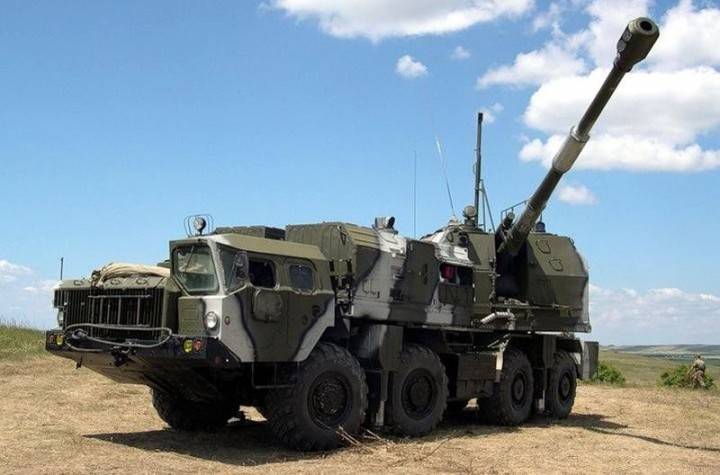
It is possible that someone will now slyly grin - well, well, in the age of rockets, someone else remembers barreled artillery! And it will be categorically wrong: because today, and tomorrow, and for a very long time, in full accordance with Napoleon’s expression, it is the guns that will kill people. Perhaps sometime, in the era of space blasters and the Death Stars, the barrel artillery will lose its key positions in the armed forces, but this is clearly going to happen very, very soon.
A-222 "Beach" began to develop at the end of 70-s, but its performance characteristics inspire respect today. The installation is semi-automatic and is able to send 14 projectiles with a caliber of 130 mm to a distance of 23 km (at the initial speed of 850 m / s) in flight per minute. As far as can be understood from the descriptions of this gun, it is possible to fire a reinforced combat charge in which the initial speed rises to 930 m / s and range to 27 150 m. In addition to high-explosive, the A-222 ammunition also includes armor-piercing and anti-aircraft missiles.
Six of these guns form a division capable of bringing more than 2,8 tons of shells containing almost 300 kg of explosive to the enemy in a minute more than 130. But the main advantage of this artillery system is the fire control system, which is largely unified with that used on AK-35 shipboard installations. The fire control system uses two channels - radar and optical-electronic, which allows detecting the enemy at a distance of up to 200 km and capable of operating in a difficult jamming environment. The OMS provides target designation for small marine targets (up to a tank or an armored personnel carrier), moving at speeds up to XNUMX nodes (such, in general, have not yet been invented) and provides support for four targets, while simultaneously firing two of them two.
The mass of the self-propelled artillery installation is 43,7 tons with full ammunition, numbering 40 shots.
Of course, in terms of its anti-ship capabilities, the A-222 loses much to the Bastion and Ball missiles, but the Bereg is much more versatile. It is an extremely formidable anti-landing vehicle capable of “working” not only on ships and vessels, but also directly on a landing force, on which the use of anti-ship missiles is irrational (despite the fact that the Bal ballistic missiles are not intended to attack ground targets). But after all, the threat to domestic naval (and not only) facilities off the coast can emanate not only from the sea, but also from land, and against the ground forces of the enemy, "Bereg" is able to "work off" no worse, and perhaps even better than the army large-caliber artillery. Therefore, A-222 should be considered an extremely important addition to GRAVs and one can only hope that in the future, the developers of domestic ACS will not forget about the specific needs of the Coastal Forces.
To date, the BRAV of the Russian Navy is likely to include 36 A-223 artillery systems, that is, six divisions.
Продолжение следует ...
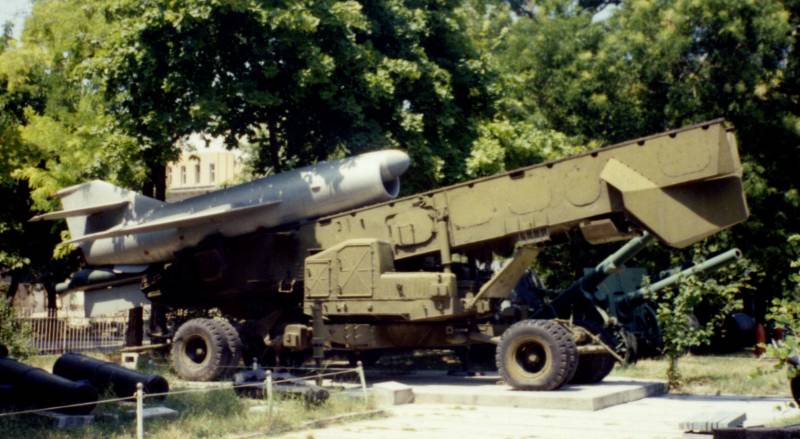
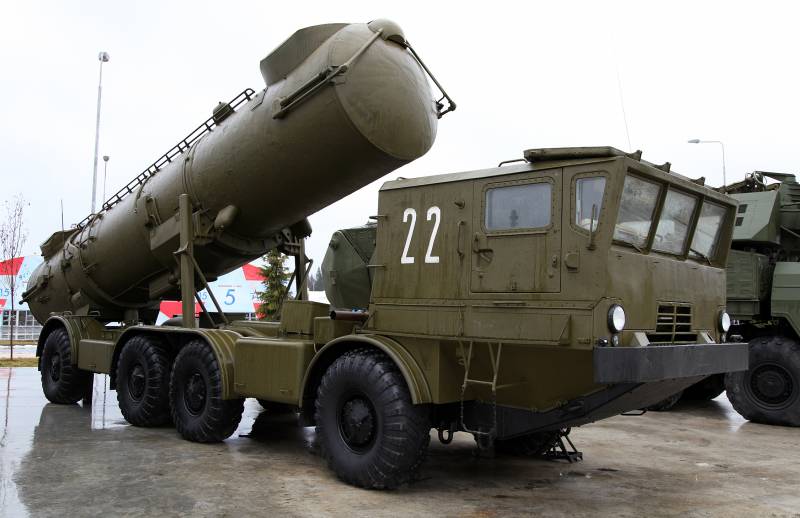
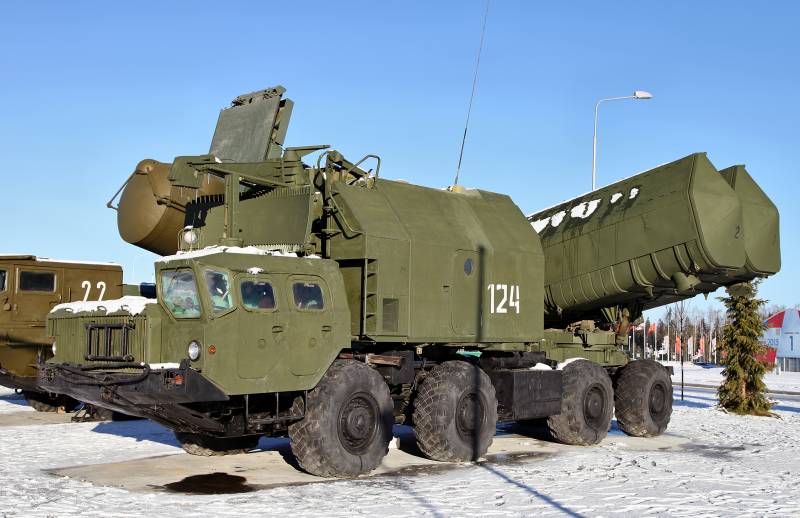
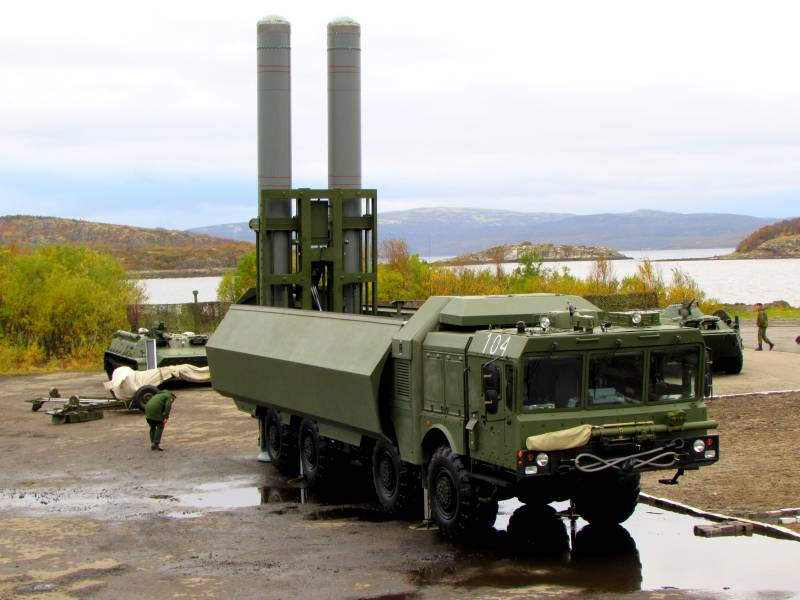
Information